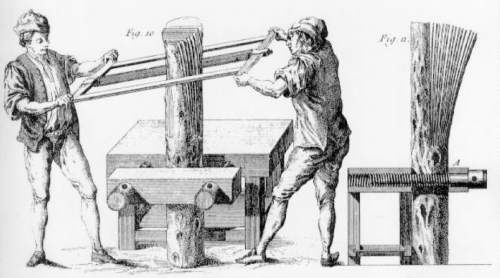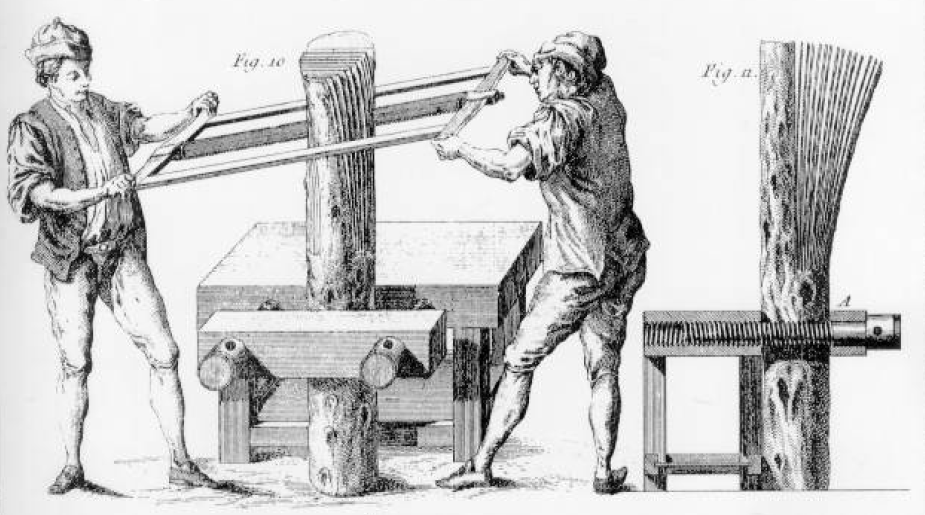Carpentry is one of the oldest artisan skills co-opted by the props artisan. Every culture that exists near trees utilizes wood as a construction material in some way. It was inevitable that they would also build their various theatre articles out of wood. Masks, used in early rituals, were often wooden. In medieval Europe, various guilds sponsored plays which were related to their specific trade. For example, the ship builders’ guild would put on a play about Noah’s Ark, and the Bakers’ Guild would provide the accouterments for The Last Supper. Furniture, then, was most likely built by actual craftsmen as needed.
Likewise, France in the time of Moliere saw craftsmen building props. The theatre was controlled by the monarchy, which also controlled the various guilds, who enjoyed monopolies in their industries. Thus, if a play called for a chair or table which could not be borrowed, the specific furniture guild could be called upon to construct what was needed.

Several societal innovations occurred which brought carpentry out of the guilds and more accessible to the average prop master. The industrial revolution brought standardized parts and mass production. This greatly improved the quality and amount of carpentry tools which were available to the general public. Tools such as highly accurate marking devices, truer saws, and mechanically-advantaged drills increased the speed and efficiency of carpentry to the point where a more generally-trained property master could now construct custom props out of wood for a show.
The second innovation, which is really an extension of the first, is the introduction of electrical power tools. Tools which relied on power were certainly available long before electricity; animal, water and steam power could drive a shaft in a large shop, which in turn, drove any number of large power tools. Electricity made it possible to escape the line and bring the tool anywhere. A prop master could now use a table saw or band saw in a basement of a theatre as long as they had an electrical outlet down there. If they needed to bring a tool to another part of the theatre, they could. The great leap forward came not just in the greater speed and efficiency of these tools, but also the ability to set up a shop in nearly any location. This innovation continued with the introduction and improvement of battery-operated power tools. These days, you can perform just about anything on a cordless tool as you can with a corded one.
These innovations should not be overlooked. If you’ve ever ripped multiple pieces from a full-length piece of plywood, imagine having to do the same thing with a handsaw. The sheer amount of carpentry which a props artisan can accomplish in one day is far greater by magnitudes than what was possible in the days before Vaudeville.





